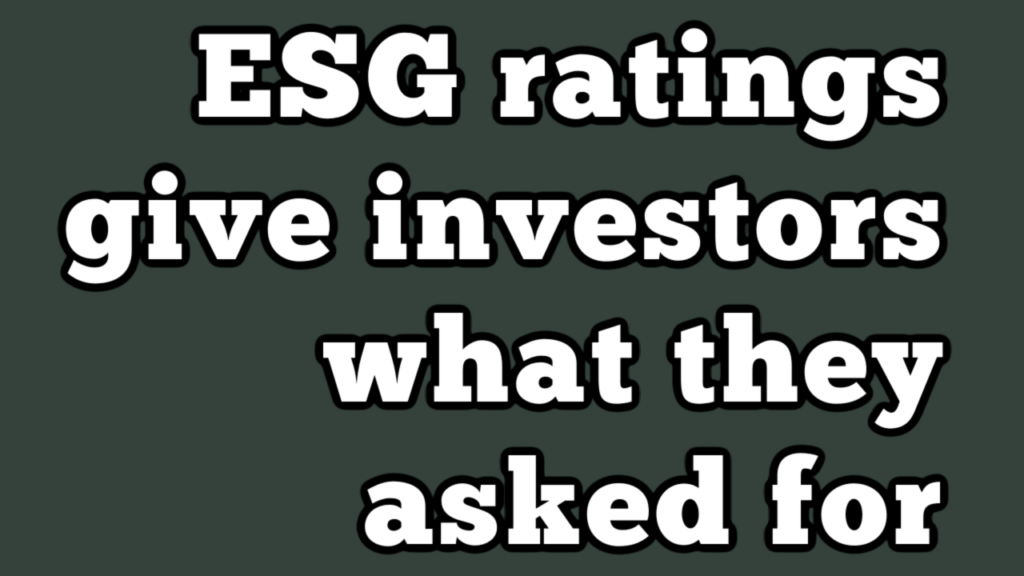ESG ratings give investors what they asked for

Here’s a note from Sakis Kotsantonis about this article:
I find the whole criticism that ESG ratings are focused on risks rather than a company’s impacts to the world very ironic.
My personal view – the ESG data providers did exactly what the market asked them to do. My best guess is also that all the ‘experts’ complaining about the ESG risk view have never been in a call with any investor who is a user
of the data.The very first question an investor asks when looking at a new ESG dataset is: how is this financially material? No one ever asks, ‘is this data good enough to measure positive and negative impacts to the environment and the society’?
Data providers did exactly what the market asked them to do, identify ESG risks that might impact the bottom line. Use ESG ratings as opinions and build your own thesis around them. There has been substantial effort in data collection, clean up and model development to get to the point we are.
If the market now wants impact data, 1. Get ready to pay for it (would be interested to see actual $ spend on impact data), 2. Stop leading with the question: how is this financially material?
It might not be financially material because no one has accurately priced those externalities the same way it has been done for carbon emissions. It might not yet be financially material because the time horizon of some of these impacts might be beyond your typical next quarterly targets. It might not be financially material because consumers are still catching up with what sustainability is and despite what you read on the news, consumer preferences haven’t changed substantially (yes people still buy petrol engine cars, shocking isn’t it?)
It is so much easier to criticise than work on a solution. Impact data is the way forward, but you need both the ESG risk view and the impact view.
